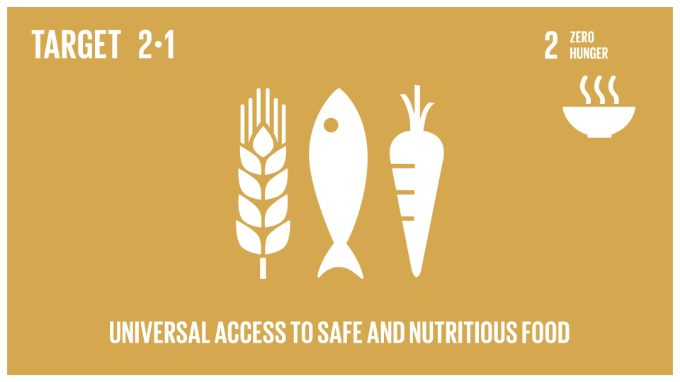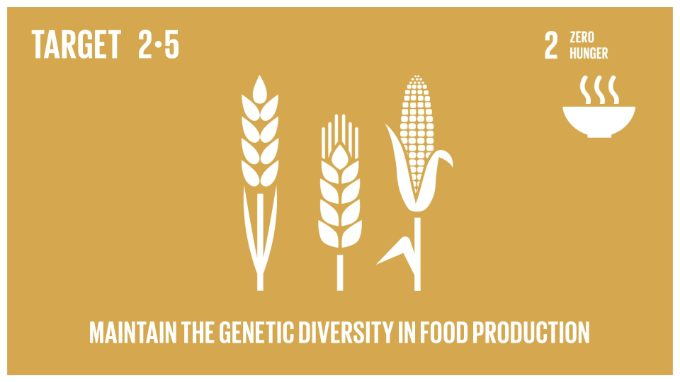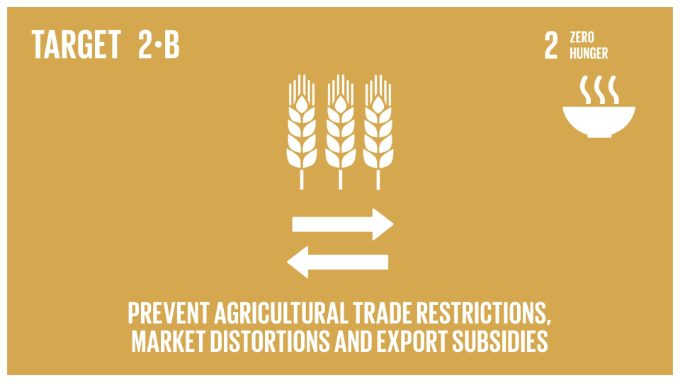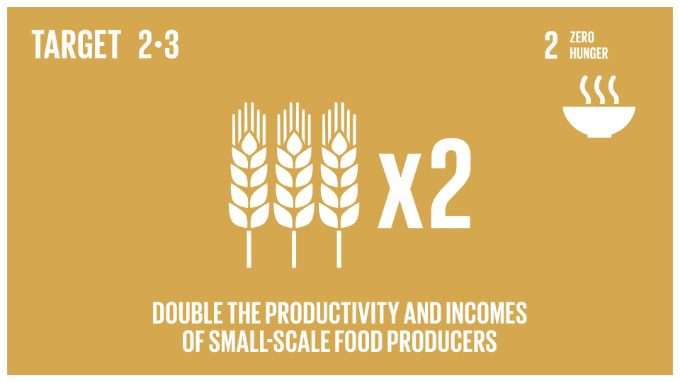Overview:
Hunger is the leading cause of death in the world. Our planet has provided us with tremendous resources, but unequal access and inefficient handling leaves millions of people malnourished. If we promote sustainable agriculture with modern technologies and fair distribution systems, we can sustain the whole world’s population and make sure that nobody will ever suffer from hunger again.
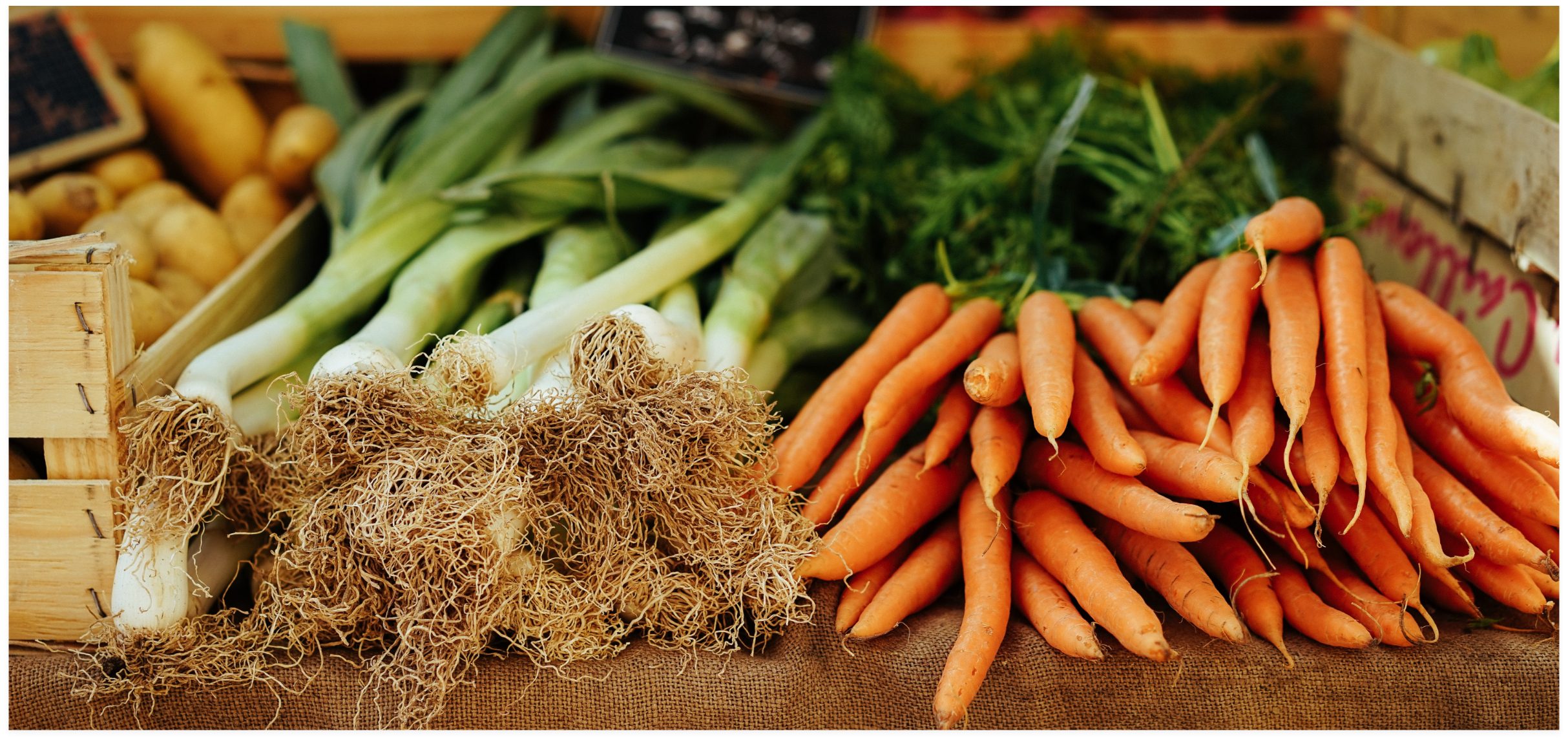
International Progress 2023:
The number of people facing hunger and food insecurity has been on the rise since 2015, with the pandemic, conflict, climate change and growing inequalities exacerbating the situation. In 2015, 589 million people were experiencing hunger, and by 2021, that number had risen to 768 million. Projections show that by 2030, approximately 670 million people will still be facing hunger – 8% of the world’s population, the same as in 2015.
Despite global efforts, too many children continue suffering from malnutrition and the current annual rate of reduction in stunting must increase by 2.2 times to meet the global target. To achieve zero hunger by 2030, immediate and intensified efforts are required to transform food systems, ensure food security and invest in sustainable agricultural practices.
Targets —
-

Target 2.1
The COVID-19 pandemic exacerbated an already deteriorating food security situation, with about 150 million more people facing hunger in 2021 than in 2019. In addition, nearly 1 in 3 (2.3 billion people) were moderately or severely food insecure in 2021. This represents an increase of almost 350 million people since the beginning of the pandemic.
The most worrisome increases were seen in sub-Saharan Africa. The ongoing crisis in Ukraine is yet another threat to food security. -

Target 2.2
Globally in 2022, an estimated 22.3% of children under age 5 (148 million) were affected by stunting, down from 24.6% in 2015. Overweight affected 37.0 million children under age 5 (or 5.6%) and wasting affected 45 million (or 6.8%) in 2022. The global prevalence of overweight children has stagnated, and if current trends continue, the 2030 target will be missed by 17.5 million children. Further, the prevalence of anaemia in women of reproductive age continues to be alarming, stagnant at around 30% since 2000. And low and lower-middle income economies bear the greatest burden of stunting, wasting, low birth weight and anaemia.
-

Target 2.5
Although 71% of local livestock breeds with a known status are at risk of extinction, progress has been made in ex-situ cryopreservation: Between 1995 and 2022, the number of local and transboundary breeds for which sufficient material is available increased from 57 to 287 (out of 7688 local breeds) and from 31 to 175 (out of 1115 transboundary breeds), respectively. At the end of 2021, an estimated 5.8 million accessions of plant genetic resources for food and agriculture were conserved under medium- or long-term conditions in 846 gene banks in 115 countries and 17 regional and international research centres, representing a 1.1% year-on-year increase in 2021.
-

Target 2.a
Investment in agriculture is falling. Government expenditure on agriculture relative to the agriculture sector’s contribution to GDP has declined from 0.50 in 2015 to 0.45 in 2021 in all regions except Northern America and Europe, which was driven mostly by the COVID-19 pandemic response.
-

Target 2.b
In December 2015, WTO Members adopted the Ministerial Decision on Export Competition, thus formally agreeing to eliminate all forms of agricultural export subsidies entitlements. Total notified annual export subsidy outlays fell from their peak of 218 million in 2015 to almost zero in 2021.
-

Target 2.c
In 2021, the share of countries facing moderately to abnormally high food prices was 21.5%, a significant decline from
the record-high of 48% in 2020, when the easing of COVID-19 related restrictive measures prompted strong demand. However, this is still above the 2015-2019 average (15.2%), reflecting continued increases in food prices, mainly supported by elevated production and transport costs on account of costlier fertilisers and energy. In sub-Saharan Africa and among LDCs, the proportion of countries experiencing high food prices increased for the second consecutive year in 2021.
Ireland’s
Progress 2023:
Child stunting, undernourishment, and wasting are not significant issues in Ireland. However, the use of food banks has increased in recent years, and a Food Poverty Working Group has had to be established. Disadvantaged schools (DEIS) receive school meals and from September 2023 all DEIS primary school children will receive a hot school meal. The government have committed to rolling out hot school meals for all school students by 2030.
Ireland is struggling with progressing sustainable agriculture. The EU’s Common Agricultural Policy (CAP) has supported intensification by subsidising food production over the other services that farmland can provide (such as regulation of soil and water quality, carbon sequestration, support for biodiversity and cultural services). Despite numerous and on-going reforms, the current CAP policy framework has failed to drive sustainability and environmental protection. Since its establishment in 1962, the CAP has driven the intensification of agriculture and has promoted the simplification and specialisation of agricultural ecosystems. This, in turn, has led to profound biodiversity loss, land degradation, including over-grazing, and climate change. Limited funding goes to support climate-friendly and biodiverse farming regions.
Targets —
-

By 2030, end hunger and ensure access by all people, in particular the poor and people in vulnerable situations, including infants, to safe, nutritious and sufficient food all year round.
CSO data
2.1 The prevalence of undernourishment in Ireland was estimated to be 2.5% in 2017 and this estimate has not changed since 2000.
2.2 The at risk of food poverty rate was 8% in 2018, showing a constant decrease since 2013 when it was 13.3%.
2.1.1
Prevalence of undernourishment
2.1.2
Prevalence of moderate or severe food insecurity in the population, based on the Food Insecurity Experience Scale (FIES)
-

By 2030, end all forms of malnutrition, including achieving, by 2025, the internationally agreed targets on stunting and wasting in children under 5 years of age, and address the nutritional needs of adolescent girls, pregnant and lactating women and older persons.
CSO data
2.2.1 The highest standard deviation from the mean height was 5.2 cm for children aged 2 years.
2.2.2 Overall, in 2012, 80% of 2–4-year-old children were classified as normal weight using International Obesity Task Force (IOTF) criteria. 2% were classified as thin, whereas 15% were defined as overweight and 3% as obese. Overall, in November 2018, at age three years, 19% of children were overweight and a further 5% were obese which, if extrapolated to the full population, indicates that 16,338 three-year-olds were overweight or obese.
2.2.3 No data given
2.2.1
Prevalence of stunting (height for age <-2 standard deviation from the median of the World Health Organization (WHO) Child Growth Standards) among children under 5 years of age
2.2.2
Prevalence of malnutrition (weight for height >
+2 or <-2 standard deviation from the median of the WHO Child Growth Standards) among children under 5 years of age, by type (wasting and overweight)2.2.3
Prevalence of anaemia in women aged 15 to 49 years, by pregnancy status (percentage)
-

By 2030, double the agricultural productivity and incomes of small-scale food producers, in particular women, indigenous peoples, family farmers, pastoralists and fishers, including through secure and equal access to land, other productive resources and inputs, knowledge, financial services, markets and opportunities for value addition and non-farm employment.
CSO data
2.3.1 The volume of production of farming per labour unit was 32.3 for 2016.
2.3.2 The average income of small-scale food producers in 2016 was €2,410. This is not disaggregated by sex as per the indicator.
Measuring what matters
There are only 60 field vegetable growers in Ireland – 85pc less field vegetable producers in the country than there was 25 years ago and those still in the sector are under increasing pressure. The exits [of these farmers] are down to labour shortages, a lack of access to land and financing, coupled with low pay for produce. Source: Bord Bia’s Director of Horticulture, Mike Neary
2.3.1
Volume of production per labour unit by classes of farming/pastoral/ forestry enterprise size
2.3.2
Average income of small-scale food producers, by sex and indigenous status
-

By 2030, ensure sustainable food production systems and implement resilient agricultural practices that increase productivity and production, that help maintain ecosystems, that strengthen capacity for adaptation to climate change, extreme weather, drought, flooding and other disasters and that progressively improve land and soil quality.
CSO data
2.4.1 The agricultural area under organic farming (which is used to indicate the Proportion of Agricultural Area Under Productive and Sustainable Agriculture) rose from 0.7% in 2001 to 2.6% by 2018.
2.5.1 There are three cattle breeds being conserved long term in a national gene-bank – Kerry, Dexter and Irish Moiled. The number of plant genetic resources for food and agriculture secured in conservation facilities (either medium or long-term) increased by over a third between 2000 and 2019, rising from 1,044 to 1,415.
2.5.2 In 2018, 89% of our local breeds were classified as being at risk, with 11% not at risk.
2.4.1
Proportion of agricultural area under productive and sustainable agricultural practices
-

By 2020, maintain the genetic diversity of seeds, cultivated plants and farmed and domesticated animals and their related wild species, including through soundly managed and diversified seed and plant banks at the national, regional and international levels, and promote access to and fair and equitable sharing of benefits arising from the utilization of genetic resources and associated traditional knowledge, as internationally agreed.
2.5.1
Number of plant and animal genetic resources for food and agriculture secured in either medium or long-term conservation facilities
2.5.2
Proportion of local breeds classified as being at risk of extinction
-

Increase investment, including through enhanced international cooperation, in rural infrastructure, agricultural research and extension services, technology development and plant and livestock gene banks in order to enhance agricultural productive capacity in developing countries, in particular least developed countries.
CSO data
2.a.1 The Agriculture Orientation Index (AOI) was 1.2% in 2018. The AOI was highest in 2008 at 3.63%.
2.a.2 The Official Development Assistance (ODA) spent on agriculture was €25.21 million (3% of Total ODA) in 2018.
2.a.1
The agriculture orientation index for government expenditures
2.a.2
Total official flows (official development assistance plus other official flows) to the agriculture sector
-

Correct and prevent trade restrictions and distortions in world agricultural markets, including through the parallel elimination of all forms of agricultural export subsidies and all export measures with equivalent effect, in accordance with the mandate of the Doha Development Round.
CSO data
2.b.1 Agricultural export subsidies more than halved in the five years from 2010 to 2015. Apart from a few selected agricultural products, developed countries have agreed to remove export subsidies with immediate effect, and most developing countries have agreed to do so by 2018.
2.b.1
Agricultural export subsidies
-

Adopt measures to ensure the proper functioning of food commodity markets and their derivatives and facilitate timely access to market information, including on food reserves, in order to help limit extreme food price volatility.
CSO data
2.c.1 The CPI for food and non-alcoholic beverages was 96.9 in 2019, slightly down from 97.5 in 2018. This Index in the CPI was at its highest at 107.7 in 2013 but has declined continuously since then. The FAO Food Price Index (FFPI) averaged 180.5 points in February 2020, down 1.9 points (1.0%) from January but still 13.5 points (8.1%) higher than in February 2019.
2.c.1
Indicator of food price anomalies



